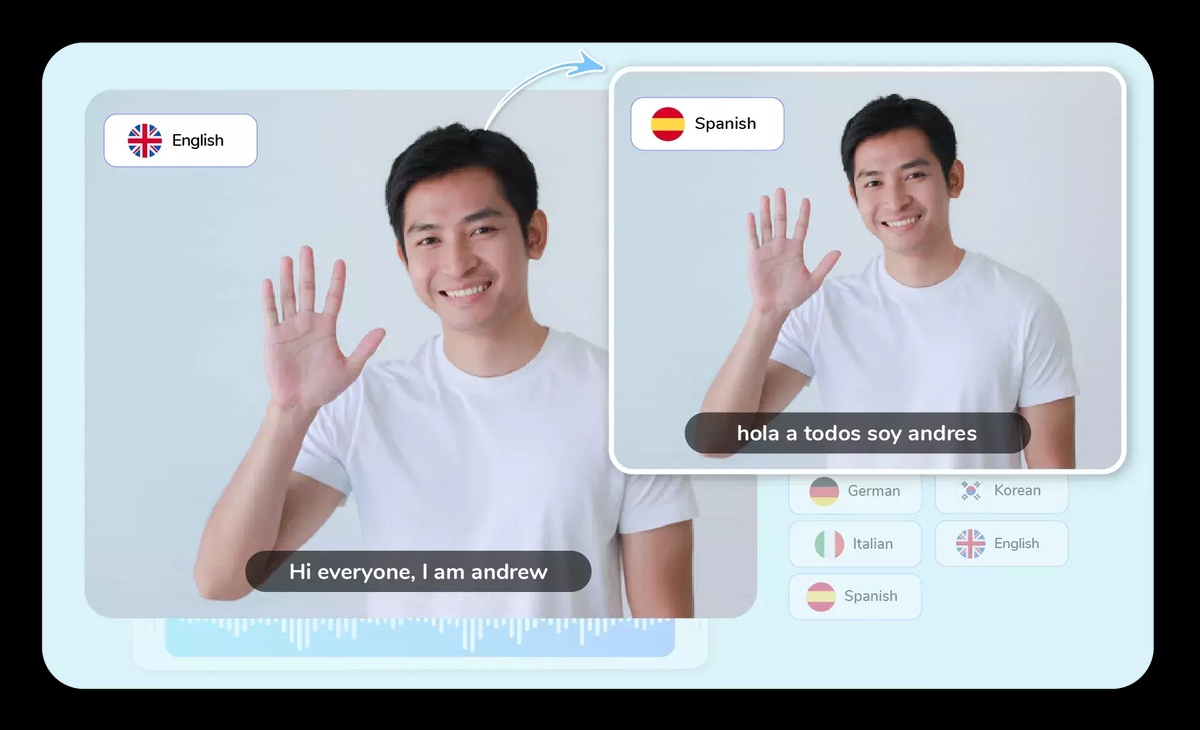In today's interconnected world, where communication knows no borders, breaking down language barriers is more crucial than ever. The emergence of video language translators has revolutionized the way we connect across diverse linguistic landscapes. In this article, we will explore the intricacies of video language translation, its applications, benefits, challenges, and the future it holds for seamless global communication.
What is a Video Language Translator?
Multilingual Video Translators are cutting-edge tools designed to facilitate the real-time translation of spoken words in video content. Unlike traditional translation methods, these tools leverage advanced technologies such as artificial intelligence and machine learning to provide instantaneous and accurate translations. Their primary goal is to enable effective communication among individuals and businesses operating in a multilingual environment.
Key Features of Video Language Translators
The impressive features of Multilingual Video Translators contribute to their widespread adoption. These tools offer real-time translation capabilities, allowing users to experience content in their preferred language as it unfolds. Additionally, they support multiple languages, ensuring inclusivity and accessibility on a global scale. The integration of these tools with various video platforms further enhances user convenience, making them indispensable for content creators and businesses alike.
How Video Language Translators Work
The functionality of Multilingual Video Translators is grounded in sophisticated technologies. These tools employ advanced algorithms to analyze spoken words, recognize speech patterns, and provide accurate translations. The incorporation of machine learning ensures continuous improvement in translation accuracy, making them reliable solutions for overcoming linguistic barriers. The significance of precise voice recognition cannot be overstated, as it directly influences the quality of the translated content.
Applications of Multilingual Video Translators
The applications of video language translators span various sectors, revolutionizing global communication. In the business landscape, these tools play a pivotal role in facilitating cross-cultural collaborations and enhancing communication in international ventures. Content creators also benefit significantly, as video translation opens doors to new audiences, leading to increased engagement and viewer retention. Moreover, Multilingual Video translators contribute to making digital content accessible to diverse audiences worldwide.
Benefits for Content Creators
For content creators, the adoption of video language translators translates into a myriad of benefits. Firstly, it expands their audience reach, allowing them to connect with viewers from different linguistic backgrounds. Breaking language barriers for video content not only broadens the viewer base but also fosters a sense of inclusivity. As a result, content creators witness increased engagement, longer watch times, and a more diverse audience.
Challenges in Video Language Translation
Despite the remarkable advantages, video language translation comes with its set of challenges. One primary concern is the accuracy of translations, especially when dealing with complex phrases or industry-specific terminology. Cultural nuances and context also pose challenges, as the richness of language can sometimes be lost in translation. Continuous efforts are required to address these challenges and refine video language translation tools for optimal performance.
Popular Video Language Translation Tools
In the ever-evolving landscape of video language translation, several tools have gained prominence. A comparative analysis of leading tools reveals variations in features, user interfaces, and translation accuracy. Some of the popular choices include [Tool A], [Tool B], and [Tool C], each catering to specific needs and preferences.
User Experiences and Testimonials
Real-world examples highlight the effectiveness of Multilingual Video Translators. Content creators and businesses share their success stories, emphasizing how these tools have transformed their communication strategies. Testimonials provide insights into the practical benefits, from reaching a global audience to fostering international collaborations.
Future Trends in Video Language Translation
As technology advances, the future of video language translation holds exciting possibilities. Further developments in artificial intelligence and machine learning are expected to enhance translation accuracy and expand language support. Predictions suggest that video language translation will become more seamless and integrated into various aspects of digital communication.
How to Choose the Right Multilingual Video Translators
Selecting the right Multilingual Video Translators is crucial for businesses and individuals aiming to optimize their communication efforts. Factors such as cost, translation accuracy, user interface, and integration capabilities should be considered. A careful evaluation ensures that the chosen tool aligns with specific needs and enhances the overall user experience.
Tips for Optimizing Video Content for Translation
Creating content with translation in mind maximizes the effectiveness of Multilingual Video Translators. Best practices include using clear and concise language, avoiding industry jargon, and providing subtitles. By following these guidelines, content creators can ensure that their videos are easily translatable, reaching a wider audience without compromising on quality.
Security and Privacy Concerns
While embracing video language translation tools, it's essential to address security and privacy concerns. Users should be cautious about potential risks associated with data breaches and ensure that the chosen tool complies with data protection regulations. Being mindful of these concerns helps maintain the integrity of sensitive information during the translation process.
Case Studies: Successful Integration of Multilingual Video Translators
Real-world case studies exemplify the impact of video language translators on businesses and content creators. Statistics and outcomes showcase how companies have successfully integrated these tools into their communication strategies, leading to increased global reach, improved collaboration, and enhanced user satisfaction.
Conclusion
Multilingual Video translators have emerged as indispensable tools in fostering global communication. Breaking down language barriers, these tools empower businesses and content creators to connect with diverse audiences worldwide. While challenges exist, continuous advancements in technology and a commitment to addressing concerns ensure that Multilingual Video Translators will play a pivotal role in shaping the future of digital comm


No comments yet